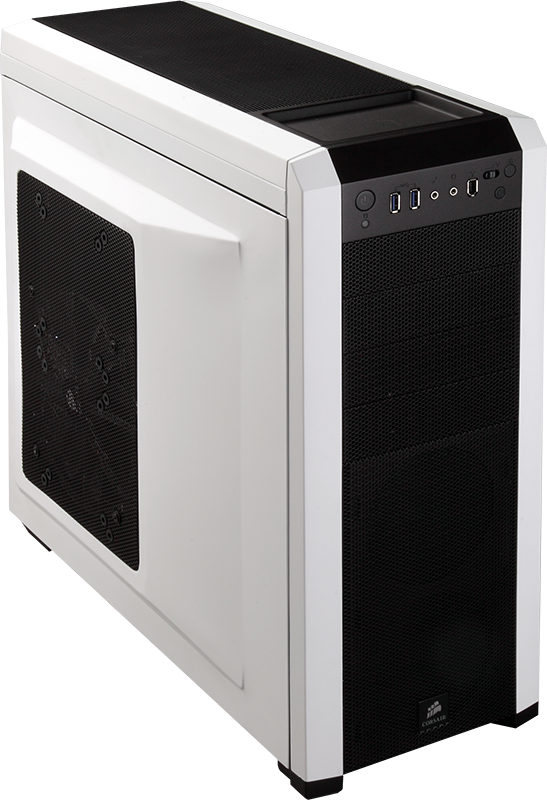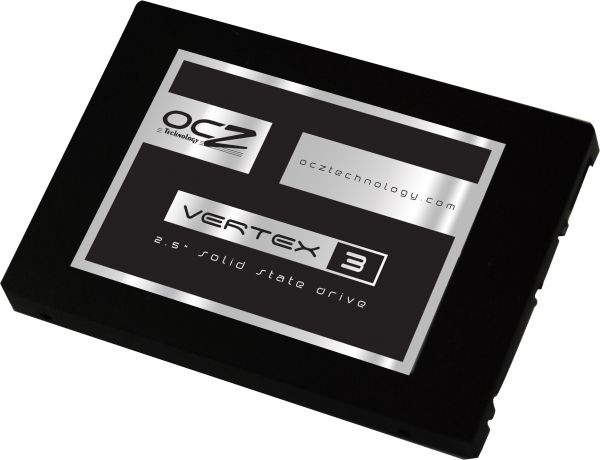Holiday 2011 Midrange System Buyer's Guide
by Zach Throckmorton on December 6, 2011 12:00 AM EST- Posted in
- Guides
- AMD
- Intel
- Sandy Bridge
- Llano
- Holiday 2011
- midrange
- NVIDIA
The Intel Core i5-2500K CPU
Intel's Sandy Bridge architecture based Core i5-2500K needs little introduction at this time. Almost a year after its release, it remains unrivaled in terms of performance, power consumption, enthusiast-friendly overclockability, and price. Anand reviewed the CPU earlier this year, and I summarized the Sandy Bridge CPU and chipsets in a previous buyer's guide. You can also check Bench for detailed metrics on the 2500K's performance. Simply put, you can't buy a better processor for the money, and its performance for its cost makes it a tremendous value.
The components
I've recommended the Biostar TZ68A+ in previous guides and it continues to be my go-to Z68 chipset-based LGA 1155 motherboard. I continue to have great experiences with it (like no DOA boards, knock on wood), and the many I've put in systems continue running without issue. Its feature set is good, its performance is great, and its cost is comparatively low. Perhaps its only negative is that it has fewer than average rear USB ports; you might need a USB port dock if you'll be attaching a lot of peripherals to it.

For the graphics card, we're highlighting the Radeon HD 6850. Prices of cards based on this GPU have fallen over the last few months to lows of around $130 after rebate, where it offers unbeatable performance for the price. The GTX 460 1GB is its closest NVIDIA competitor, performance-wise, as you can see from Bench. The two cards are very evenly matched, but the Radeon HD 6850's lower power consumption and lower price tag make it the better buy. Succinctly, it can play even the most demanding games at high resolutions at acceptable frame rates. AMD's HD 7000 series should come out in the not-too-distant future, but we can't share any details on where those will rank right now.
Because Sandy Bridge CPUs are less responsive to faster RAM than AMD's Llano APUs, the Core i5-2500K system requires nothing more than standard budget DDR3, in this case, an 8GB kit. For storage, we've opted to go with a slightly less expensive but still solid performing SSD, OCZ's Vertex 3. 60GB is enough space for your OS and applications, and like the $800 AMD build, the Samsung F3 1TB HDD is a lot of space for big game and media libraries.
Though neither the i5-2500K nor the Radeon HD 6850 are power hogs, Corsair's Builder Series CX500 offers a lot of value for midrange builders at the $50 (after rebate) price point. It's more than capable of powering this system, and leaves room for future upgrades that might be more demanding on the power supply (e.g. a Core i7 CPU, faster video card, or a second Radeon HD 6850 for CrossFire). Dustin reviewed the Corsair Carbide 500R recently and after getting my own hands on one, I agree with his conclusions: it has excellent thermals and acoustics, it's extremely easy to work with, and it's well-built. Note that the white version is in the components list below, but it's also available in black.
| Component | Product | Price | Rebate |
| Processor | Intel Core i5-2500K | $220 | |
| Motherboard | Biostar TZ68A+ | $95 | |
| Video card | Gigabyte Radeon HD 6850 | $150 | -$20 |
| RAM | Kingston 8GB DDR3 1333 | $35 | |
| SSD | OCZ Vertex 3 | $100 | -$20 |
| HDD | Samsung F3 1TB | $150 | |
| Power supply | Corsair Builder Series CX500 | $60 | -$10 |
| Case | Corsair Carbide Series 500R | $140 | -$10 |
| Optical drive | LITE-ON iHAS324-98B | $20 | |
| Operating system | Windows 7 Home Premium 64-bit (OEM) | $100 | |
| Total: | $1070 | $1010 |
Summary

The Intel system outlined above is about $200 more expensive than the AMD system on the previous page. That's a 25% cost increase from the A8-3850 APU rig. Is it worth it? As you can see from the Bench comparison, the only aspects of performance where the A8 wins are idle and load power consumption. As for actual computing performance, it's not even close. Similarly, the discrete Radeon HD 6850 is leagues ahead of the on-die APU's graphics. But it is critically important to understand what the benchmark numbers mean in reality. For a casual computer user, the A8-3850 is more than adequate. However, it is not an enthusiast's chip, whereas the i5-2500K is essentially the entry-level enthusiast's processor. If you perform more demanding tasks like pro-am or professional graphics or video editing, or you're a hardcore gamer, you should spend the extra $200 and go with the Core i5-2500K system.
For those who use their PC to work hard and prefer to play elsewhere, and don't want to break the bank on near-bleeding edge performance, we've got you covered on the next page.











57 Comments
View All Comments
cjs150 - Tuesday, December 6, 2011 - link
Got admit I like the 2500K system.Anyhow I like Micro-atx boards, I just cannot think what to include in a normal build which needs all the slots of a full ATX board.
If you want the dubious pleasures of SLI/Crossfire fine (but why not use a single card with dual GPUs).
Would be more happy when the old PCI slots are fazed out and only PCIe slots are in.
As a water cooling fanboy I am intending to use the Fractal cases for next build so I definitely approve
TerdFerguson - Wednesday, December 7, 2011 - link
Great comment. You're the guy I"d want building my machine. For that matter, you're the guy I'd want writing the articles. THanksslippyrocks - Tuesday, December 6, 2011 - link
llano cpu is equal to an ancient athlon ii x4llano cpu is smoked by the $70 sandy bridge pentium would that not make more sense on the low end
gfx w/ hdmi are included on-chip sandy bridge
or HD 6450 cost $40 right now for more fps
$20 ar corsair CX400v2 will power most any setup
go with the cheapest ssd c400 or vertex 3 they are both good and proven
cheaper mechanical drives can still be found on sale <$80 1TB
llano never made sense to me outside of laptops your are paying more for less
shivoa - Tuesday, December 6, 2011 - link
On the 2500K system you specified a 60GB SSD and back-up spinning drive (as games hit 20GB installs the advice to only put OS and apps on the SSD makes sense). Obviously these aren't being budgeted as totally gaming focussed boxes (maybe there is a case for waiting for a die shrink on buying a gaming box right now, unless the mainstream well priced cards take a while to release or hit these value prices for great performance) but I think no mention of SRT is amiss here.Unless there are details I haven't read about, then SRT seems like an ideal option for a light gaming rig with a 60GB SSD to provide those 50%+ faster load times in games that the Anand benchmarks indicated when looking at what a basic 40GB SSD could do with SRT. The OS and common apps should be picked up by the caching and so be close to SSD speeds for any large reads and as the i7 rig is the one designed for processing intensive tasks the low write speeds probably wouldn't be a major issue. My experience with SRT is rather positive for a gaming focussed machine.
Calin - Tuesday, December 6, 2011 - link
"You might also have noticed that we skipped out on keyboards,"I'm still using at home a AT keyboard (with adapter), so decent keyboards do indeed last a long time (and in many cases, old keyboards feel better than many new ones)
WiZARD7 - Tuesday, December 6, 2011 - link
There is no VGA in the 1200$ system?WiZARD7 - Tuesday, December 6, 2011 - link
I can't read, it writes:"You lose the ability to game as this PC has no discrete video card (and the integrated Intel graphics are not gaming-level). "
sorry.
Bty - Tuesday, December 6, 2011 - link
AMD's HD 7000 series should come out in the not-too-distant future, but we can't share any details on where those will rank right now.ARGHHHHHHHHHHHHH!!!!!!!!!
antef - Wednesday, December 7, 2011 - link
Yeah, does this mean they do know where they will rank but just can't share it yet?Mathieu Bourgie - Wednesday, December 7, 2011 - link
Well, AMD did announce that they would launch the 7xxx this year and with less than 3 weeks before Christmas, the launch could any day now.Usually, reviewers get several days, if not 1-2 weeks+ to test products, so Ryan could very well be testing some Radeon HD 7xxx cards as I write this ;)
Thing is, all reviewers who get products before launch have to sign a NDA (Non disclosure agreement), which prohibits them from talking about any specifics/performance regarding the product.
Assuming that he is, the question here is: Which 7xxx cards is it? The higher-end ones (a la 6950/6970), mainstreams ones (a la 6850/6870) or lower-end ones?
Only time will tell. Hopefully sooner than later :D